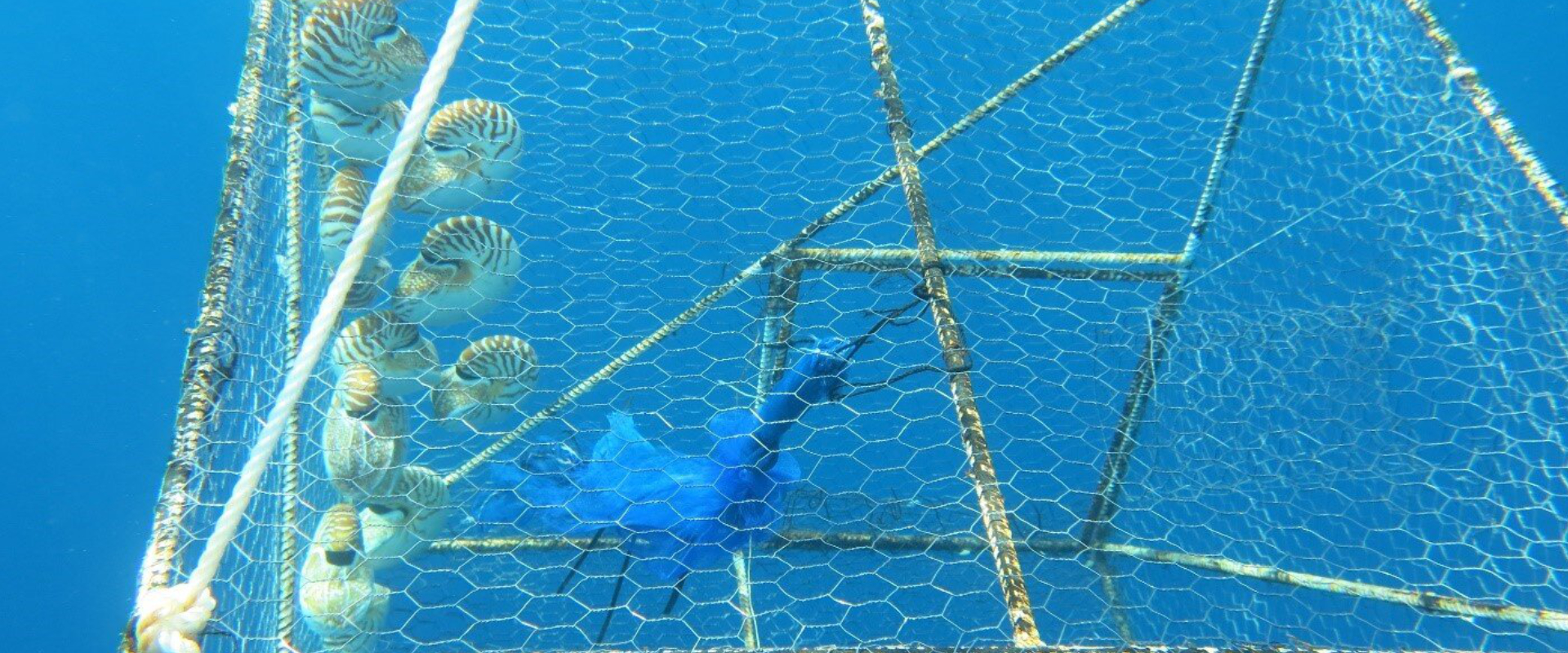Three new nautilus species described from the Coral Sea and South Pacific

Nautilus species have long been a favorite here at Quality Marine for their unusual appearance and their physiology. In the wild, species of nautilus are found very deep at about 300 meters but have been documented even deeper. Their shells have chambers in them, which aides in buoyancy. It allows the nautilus to dive or ascend by controlling the volume of liquid within their shell.
Nautiloids were once very abundant throughout the oceans with a large range, however, as time went on their populations began to decrease. They have been represented by only a handful of species. Now, Dr. Gregory Barord, marine biology instructor at Central Campus and conservation biologist at the conservation organization Save the Nautilus, began to evaluate the genetic makeup of nautilus from different regions

A nautilus trap in the water with nautiluses in it. Credit: Gregory
Barord
Dr. Barord and his team set up traps with raw chicken then dropped the traps down to the correct depths in hopes of collecting nautilus specimens for testing. Dr. Barord says "the hard part is retrieving the traps the next day, after about 12 hours of the raw chicken scent moving through the currents. There are a number of methods we've used to pull the traps up, from mechanical winches, hand-powered winches, float systems, boat pulls, and of course, just pulling with one hand at a time. Invariably, something happens in each location where we are just pulling the trap up from 300 meters one meter at a time, which takes a good half hour at least. But, at least you are getting a VERY good work-out. Eventually, you see the trap and these white little orbs in it and you know you've caught some nautiluses and the pulling is almost done, for now."
Once they have specimens brought up in the traps the team would then take photographs, measurements and non-lethal tissue samples before releasing and burping the nautilus. Burping is when a diver/free diver will bring the nautiluses down into the water and ensure no air bubbles are trapped in the shells.
Thanks to all of the research Dr. Barord and his team performed there are three new species described: Nautilus vitiensis of Fiji, Nautilus samoaensis of American Samoa, and Nautilus vanuatuensis of Vanuatu. Due to the biogeographic isolation, there is a barrier to gene flow and has resulted in evolving into distinct species. To learn more about this incredible research please read an article on https://phys.org/news/2023-02-nautilus-species-coral-sea-south.html